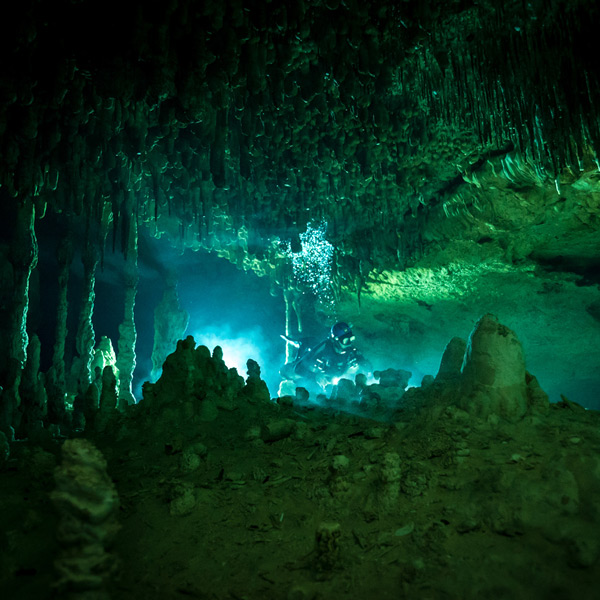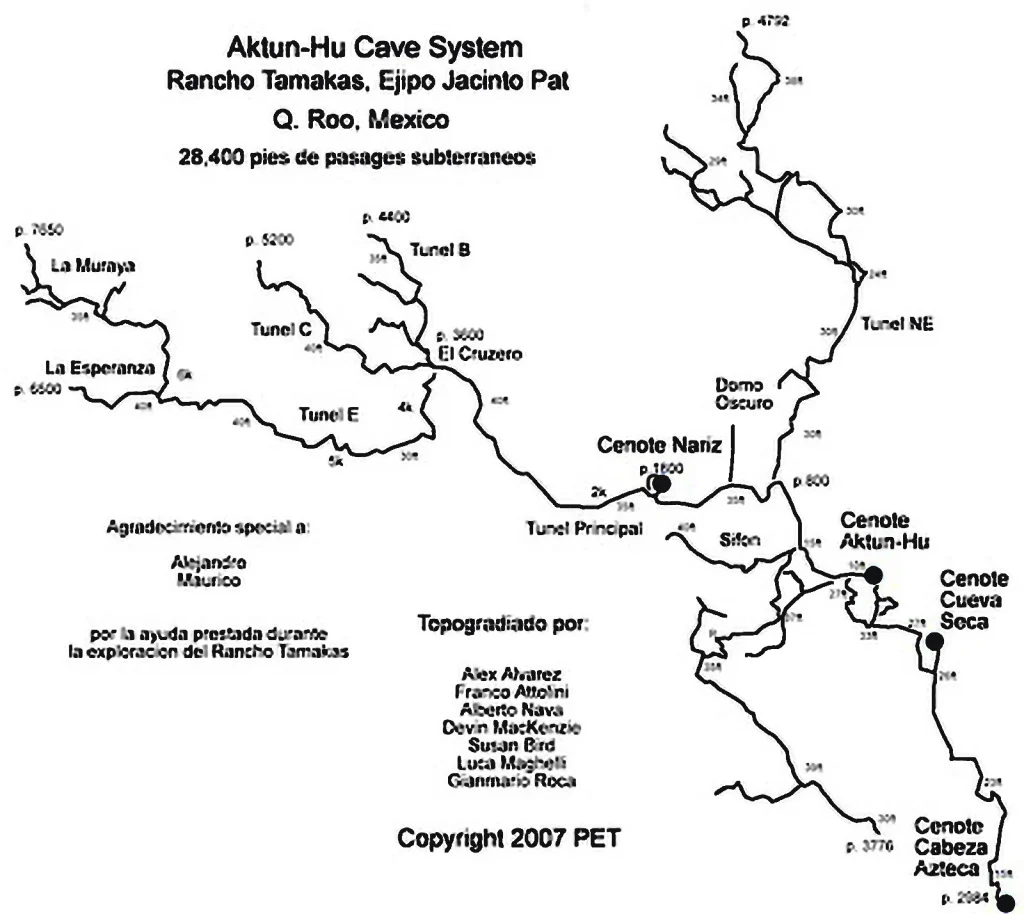Tragic Dive at Cenote Nariz: Diver’s Last Moments


| Incident Location | Diver Name |
|---|---|
| Mexico, Tulum, Cenote Nariz | Diver 1 (Name Omitted) |
Cave diving is an exhilarating yet perilous adventure that requires meticulous preparation and adherence to safety protocols. This story recounts a tragic cave diving incident at Cenote Nariz, part of Sistema Sac Actun near Tulum, Mexico. Based on interviews, dive computer data, and equipment analysis, this account aims to uncover what happened and how we can prevent such incidents in the future.
The Dive Begins
It was a typical sunny afternoon when three divers, each with their own expertise, prepared for a resurvey dive at Cenote Nariz. The team comprised:

- Diver 1: A local cavern instructor and guide, using a KISS Sidewinder CCR.
- Diver 2: Another local diver, also with a KISS Sidewinder CCR.
- Diver 3: A visiting diver equipped with an open circuit sidemount and a single stage tank.
At precisely 14:11 local time, the trio began their journey into the underwater labyrinth. The first leg of their dive was a 33-minute swim to Cenote Aktun Hu. After a brief surface interval and conversation, they resumed their survey dive at 1451.
Surveying the Cave
The divers installed their first jump at Point 2, five minutes into the dive. They navigated to Point 3, where they turned left and swam to Point 4, a narrow section of the cave. Turning back, they passed Point 3 and reached Point 5, then made another turn towards the T at Point 6, arriving at 1511 with an hour of dive time logged.
At this juncture, Diver 3 signaled he had reached his turn pressure. Diver 1 acknowledged, and Diver 3 began his solo return to the exit. Diver 1 and Diver 2 continued their exploration, leaving a REM marker at Point 7 to indicate a shorter exit route. They then headed towards Point 8, venturing into a slightly deeper section of the cave.
The Incident Unfolds
Five minutes into their return journey, near Point 9, Diver 2 noticed a rapid movement of light behind him. Turning around, he saw Diver 1 in distress, with wide eyes and a flushed face. Diver 2 tried to assist, urging Diver 1 to switch to his open circuit gas supply by purging the bailout regulator.
Diver 1, however, appeared disoriented and resistant. Despite Diver 2’s efforts, Diver 1’s rebreather loop eventually came free from his mouth. Diver 2, realizing the gravity of the situation, made the difficult decision to abandon the rescue attempt and exit the cave. As he reached the mainline at Point 7, he encountered Diver 3, who was investigating a side passage on his way out. Together, they surfaced at 1652 and immediately sought help.
Recovery Efforts
The recovery operation took place on February 4, conducted by two local cave instructors from the CREER Rescue Team, with surface support from additional divers. Civil authorities, including the Police and Civil Protection, were also present. They carried out an initial examination of Diver 1’s rebreather and documented the equipment.
Diver and Equipment Details
Diver 1
- Age: 33 years old
- Role: Active cavern/cave guide and Cavern Instructor in Quintana Roo
- Certification: Mod 1 (Air Diluent) diver on KISS Sidewinder since August 2023
- Experience: Approximately 21 dives and 25 hours on the unit, not CCR Cave trained
Equipment Used
- KISS Sidewinder CCR:
- Auto Diluent Valve disconnected and capped
- Overpressure Valve shut
- Single PO2 monitor, Shearwater Petrel 3
- Dual Button Manual Add Valve Assembly
- Steel 2L cylinder for oxygen, empty upon recovery
- COAX oxygen sensor conversion with cells marked for installation on October 31, 2023, expiring on October 5, 2024
- Diving Gear: X-Deep Stealth Rec sidemount wing and harness, drysuit
- Bailout/Diluent Tanks: Two Al80 cylinders with 32% nitrox
- Apeks Regulators:
- Left-hand cylinder: short hose regulator on a necklace, single low-pressure hose for wing/diluent manual addition valve
- Right-hand cylinder: 7ft hose and low-pressure inflator connected to the drysuit
- Additional Gear: Standard cave diving equipment, various spools and markers, Mnemo survey device
Analysis of the Incident
The precise cause of Diver 1’s death remains uncertain. Witnesses reported symptoms suggesting a seizure or cognitive impairment leading to drowning. Common triggers in rebreather incidents include hypercapnia or hyperoxia.
Hypercapnia: A Silent Threat
Hypercapnia, an excess of CO2 in the blood, causes shortness of breath, confusion, disorientation, and paranoia. Possible causes in rebreather diving include:
- Incorrect rebreather assembly
- Overexertion
- Flooded or exhausted CO2 absorbent material
- Technical issues impeding CO2 removal
In this case, the CO2 absorbent material in Diver 1’s rebreather was partially flooded. While the exact condition of the absorbent material at the time of the incident is unknown, prolonged use beyond recommended limits could have increased the risk of hypercapnia. This practice is not uncommon in warm water diving environments.
Understanding Hyperoxia
Hyperoxia occurs when there’s an excess of oxygen in the tissues. This condition can lead to Central Nervous System (CNS) Oxygen Toxicity, characterized by symptoms like convulsions, visual disturbances, and dizziness. In rebreather diving, hyperoxia may result from an excessive oxygen supply or rapid descents, often linked to faulty sensors that misread high oxygen levels.
The dive computer log indicated an average PO2 of around 1.14, with spikes reaching 1.73 at the start of the dive. Although high, these readings are unlikely to solely cause toxicity. Previous dives showed erratic cell behavior, suggesting intermittent issues with Diver 1’s rebreather.
The Interplay of CO2 and O2
Hypercapnia, or excess CO2 in the bloodstream, and hyperoxia can exacerbate each other. Elevated oxygen levels can lead to increased CO2 production, causing confusion and decreased sensitivity to high CO2. This combination increases the risk of CNS toxicity symptoms and complicates the diver’s situation.
Human Factors in Diving Safety
Diving accidents often stem from multiple causes, making it crucial to examine the systems and behaviors at play. Key factors contributing to this incident include:
- Certification Levels: Diving beyond certified experience increases risks, especially in complex environments like caves.
- Communication: Creating a safe environment for divers to voice concerns can prevent critical errors. The cave diving rule allowing any diver to abort a dive for any reason is essential.
- Team Dynamics: Separating during a dive reduces resources and decision-making capacity, increasing risk in emergencies.
Normalization of Deviance
A concerning trend in diving is the normalization of deviance, where safety protocols are gradually ignored. This behavior often starts with instructors and can trickle down to less experienced divers. Examples include using rebreather scrubbers beyond recommended durations, risking CO2 buildup.
Regular practice of emergency procedures, such as rescues, is vital. Sheck Exley’s recommendation emphasizes the need for preparedness before diving. Formal checklists are crucial for ensuring safety in rebreather dives, aiding in identifying potential issues.
Ultimately, Diver 1 suffered a seizure or cognitive impairment, leading to drowning. While hypercapnia is deemed a more likely cause than hyperoxia, the exact triggering event remains uncertain. This tragedy highlights the importance of addressing not just immediate causes, but also the broader cultural and behavioral factors in diving to enhance safety and prevent future incidents.
